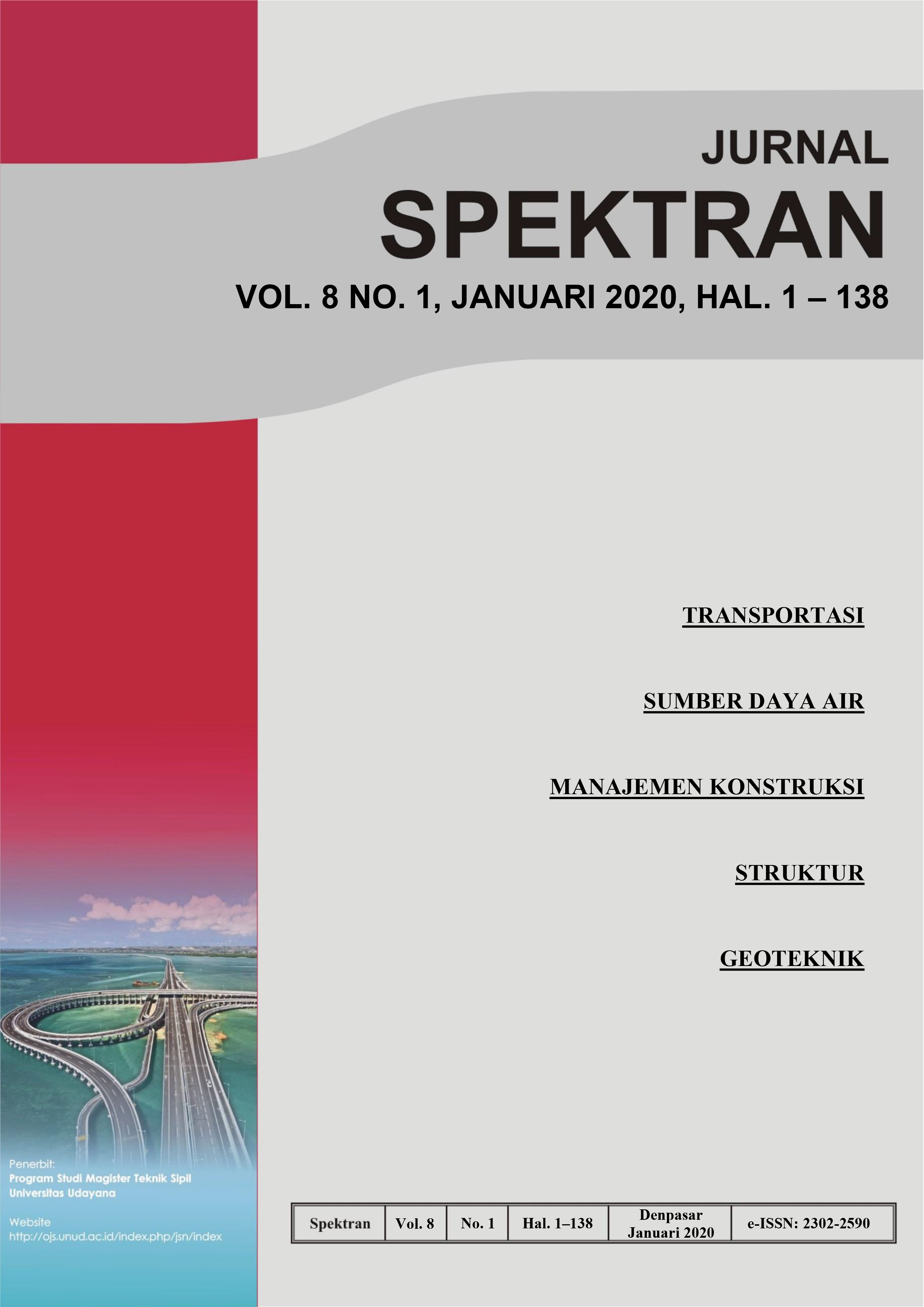ANALISIS PENGEMBANGAN SUMBER DAYA AIR DAS TUKAD SABA DENGAN DIBANGUNNYA WADUK TITAB DI KABUPATEN BULELENG
Abstract
The Saba river basin has an area of ??69.54 km2 and the length of the drainage is 36 km. The river drainage area is a hilly area, so that rainwater flows quickly which then becomes a flood. The land condition in the inundation area generally consists of rice fields that depend on rain, there is no technical irrigation system so that the cropping pattern depends on the rain. So to overcome this problem a Titab Reservoir was built. The Titab Reservoir serves as the supply of irrigation water for DI Saba with an area of ??1,396.40 ha and Pulp of 398.42 ha, raw water as much as 0.35 m3/s and PLTA with 2 x 0.75 MW. Given the importance of the benefits of the Titab Reservoir, a study of the reservoir capacity of the Titab Reservoir was conducted. The analysis begins with calculating the reliability discharge from measured discharge data, obtained Q80 of 2.01 m3/dt. Furthermore, calculating irrigation needs, while water and hydropower needs are used from existing planning data. Then do the simulation using the RIBASIM program. The simulation results show scenario 2 produces a reliability level of 83.33%, scenario 3 produces a reliability level of 82.22%, and scenario 4 produces a reliability level of 58.54%. Scenario 2 is the optimum result. Furthermore, verification of the RIBASIM model is needed using observational discharge data at the Saba dam. The verification results show that the data accuracy is quite good with a correlation coefficient of 0.74 and determination of 0.55.
Downloads
References
Kementrian Pekerjaan Umum. 1986. Kriteria Perencanaan Bagian Perencanaan Jaringan Irigasi Kp-01. Kementrian Pekerjaan Umum, Jakarta.
Krogt, W. V. D. 2013. “River Basin Simulation Model RIBASIM Version 7.00” (user manual). Netherlands: Deltares.
Omar, M. M. 2019. Evaluation of actions for better water supply and demand management in Fayoum, Egypt using RIBASIM. https://doi.org/10.1016/j.wsj.2013.12.008.
Sudarsono, 1980. A Study of Elasticity of Demand and Supply of Indonesian Fisheries 1960-1977. Journal. Tropical Ecologi and Development.
Triatmodjo, B. 2010. Hidrologi Terapan. Beta Offset, Yogyakarta.
Triatmodjo, B. 2014. Hidrologi Terapan. Beta Offset, Yogyakarta.
Wortelboer, F. G., Van De Roovaart, J. C., Karaaslan, Y., Erdemli, M. and Çankaya, B.F. 2014. Models for the water framework directive–Using RIBASIM and WFD Explorer. Book Sustainable Watershed Management. Taylor & Francis Croup.
Yekti, M.I. 2017. “Role of Reservoir Operation in Sustainable Water Supply to Subak Irrigation Schemes in Yeh Ho River Basin”. UNESCO-IHE Institute for Water Education, In Delft, the Netherland.
Yulistianto, B dan Kironoto, B.A. 2008. “Kajian Pengembangan Pengelolaan Sumberdaya Air Pada Wilayah Sungai Progo-Opak Serang Dengan RIBASIM”. Dinamika Teknik Sipil, Volume 8, Nomor 1, Januari 2008: 10–20. Universitas Gadjah Mada, Yogyakarta.




